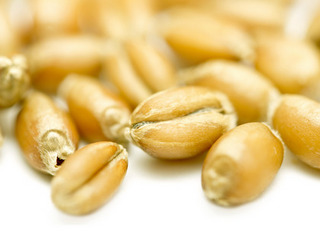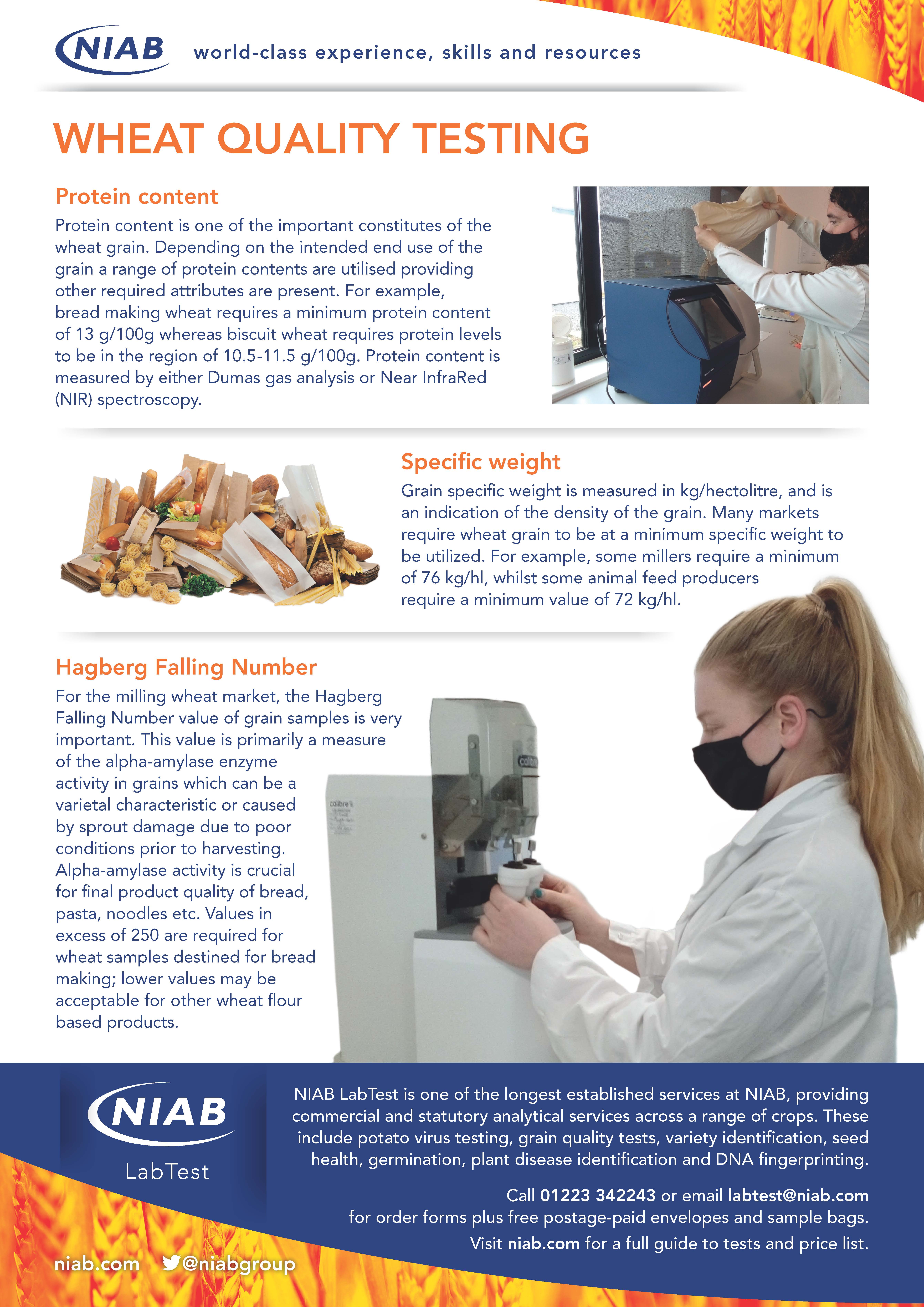
The biochemistry laboratory offers a range of tests primarily aimed at end use quality testing and varietal screening for breeders. Testing services are flexible and can be adapted to suit individual needs and budgets.
CEREALS
Download our 'Wheat Quality Testing' information poster used at events and shows
The most frequently used services are for the assessment of nitrogen/protein content, Hagberg Falling Number, specific weight and moisture. Additionally we carry out a wheat quality screening service for breeders, a high volume – low cost service, which will provide information on the potential baking quality of early generation breeding lines.
Nitrogen/protein content
For both wheat and barley one of the important constitutes of the grain is its nitrogen or protein content. Depending on the intended end use of the grain a wide range of nitrogen/protein contents are utilised providing other required attributes are present. For example, breadmaking wheat requires a minimum protein content of 13 g/100g whereas biscuit wheat requires protein levels to be in the region of 10.5 -11.5 g/100g. Barley utilised for distilling is purchased at grain nitrogen levels of less 1.5 g/100g whereas barley intended for grain distilling is likely to be in excess of 1.85 g/100g. The majority of the barley purchased for brewing is likely to have a grain nitrogen content in the range 1.55 to 1.85 g/100g. Nitrogen/protein content is measured by either Dumas gas analysis or NIR spectroscopy; advice can be provided on which is the most appropriate.
Hagberg Falling Number
For the milling wheat market, the Hagberg Falling Number value of grain samples is very important. This value is primarily a measure of the alpha-amylase enzyme activity in grains which can be a varietal characteristic or caused by sprout damage due to poor conditions prior to harvesting. Alpha-amylase activity is crucial for final product quality of bread, pasta, noodles etc. Values in excess of 250 are required for wheat samples destined for bread making; lower values may be acceptable for other wheat flour based products.
Malting
NIAB LabTest has the facilities and expertise to micro-malt and assess barley for malting quality. Sample testing can be tailored to suit your specific needs and you will have access to expert advice on the interpretation of your test results. Malt analysis by both IOB and EBC methodologies are available.
SUGAR BEET
The biochemistry laboratory uses automated equipment similar to that used commercially and extensively in continental sugar beet producing nations to screen for sugar content and impurities. NIAB offers two services one is a screening service and the other is based on British Sugar methodology; please call for further information and advice.
OILSEEDS
There are several tests available for oilseeds including total oil content, fatty acid profile and glucosinolate content.
Total oil content
The key characteristic of oilseeds is their oil content. Total oil content can be measured in a number of different ways; solvent extraction, NMR and NIR spectroscopy. Please call for further information and advice.
Fatty acid profile
The oil extracted from oilseed crops is comprised of a number of different fatty acids. These fatty acids (including erucic acid) can be extracted from the seeds and analysed by gas chromatography. Each fatty acid component of the oil is expressed as a percentage of the total composition of fatty acids.
Glucosinolates
Glucosinolates in rapemeal are consider to be anti-nutritional factors which limit the inclusion of rapemeal in animal feed. They can be analysed by XRF spectroscopy, providing a fast, cheap and reliable method of quantifying glucosinolate levels or by HPLC, which provides a more comprehensive analysis.
HERBAGE AND FODDER
Tests available for herbage and fodder crops are moisture, digestibility, starch, soluble sugars and protein.
OTHER CROPS AND ANALYSES
We will carry out dry matter assessment, nitrogen/protein content on a wide range of plant material. In addition, NIAB is able to analyse some chemically treated seeds for their pesticide loading levels e.g. imidacloprid, thiamethoxam and tefluthrin.
For more information contact:
